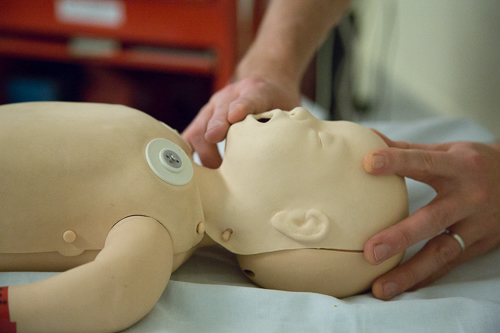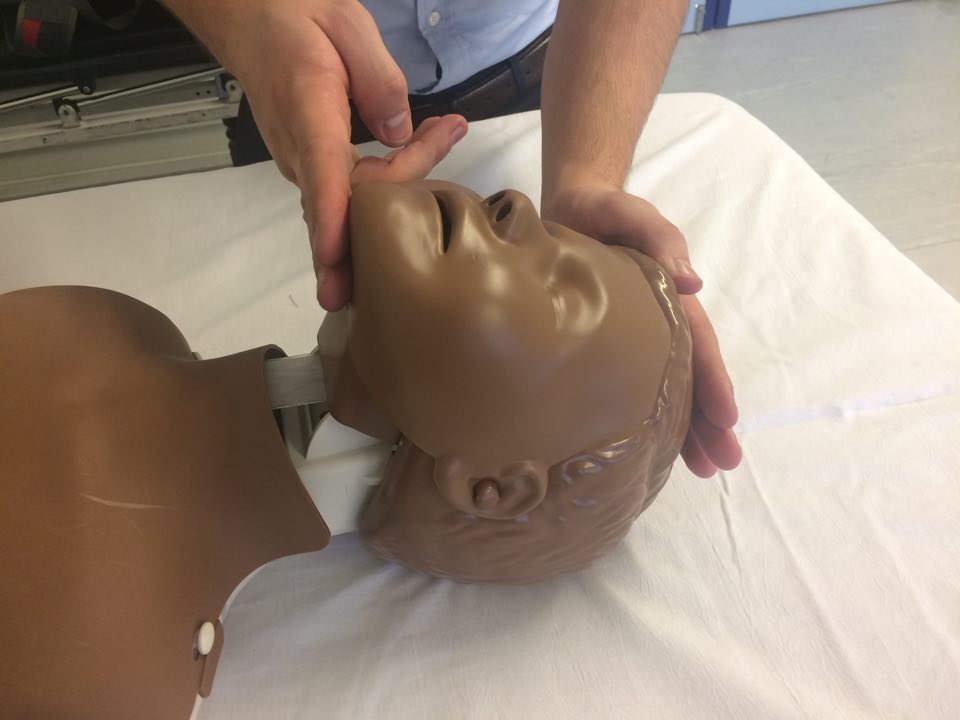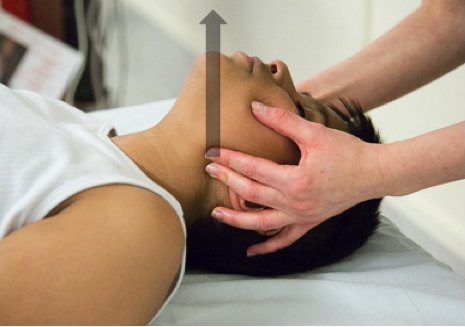
In an unconscious (arrested) child the tongue is very likely to occlude some if not their entire airway.
Open the airway
Vocalisations, such as crying or talking, indicate ventilation and some degree of airway patency. If this is not present then basic airway opening manoeuvres should be employed:
Initial airway opening techniques
|
A jaw-thrust (Figure) is usually employed if the initial manoeuvre has succeeded in opening the airway, or if there is concern regarding cervical spine injury.
An infant’s trachea is shorter and softer. If their neck is overextended or flexed the airway can be occluded; this is why the neutral position is used for infants. Therefore the neck and head are kept in a neutral position initially with a chin lift

If this is initially not successful or there is a suspicion of trauma then a jaw thrust should be employed. A jaw thrust is employed by bilaterally placing 2-3 fingers behind the infant’s mandible and anteriorly thrusting the jaw forward. (see figure 2b)


Children have relatively larger tongues compared to adults, and in extremis the tongue may occlude the airway. Even with the neutral or “sniffing” positions the airway may still not be patent, and rescue breaths (see below) may not be effective. If this is the case, the airway should be repositioned and a jaw thrust should be attempted, to further open the airway.

The jaw thrust involves pushing the jaw forward and thus preventing the tongue from obstructing the airway (Figure 4). It is performed by placing two or three fingers behind the angle of the mandible and pushing the jaw anteriorly. It may be easier for the rescuer to have their elbows resting on the same surface as the patient’s head. The rescuer may also place their thumbs, gently, over the cheeks to assist in pushing the jaw forwards.
Special considerations: It is very important that when performing the jaw thrust the rescuer places their fingers over the bony prominences of the mandible, and not soft tissues. Applying sustained pressure to the soft tissues of the neck and/or jaw could lead to trauma. Soft tissue swelling may then worsen airway compromise.